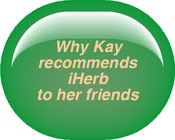 Goldenrod is the common name for Solidago virgaurea. This plant grows in Europe, Asia, and North America. This plant grows in open areas, along hillsides, and mountain ranges, reaching a height of 2 to 3 feet, with alternate leaves, and branches of golden flowers when in bloom.
Goldenrod is the common name for Solidago virgaurea. This plant grows in Europe, Asia, and North America. This plant grows in open areas, along hillsides, and mountain ranges, reaching a height of 2 to 3 feet, with alternate leaves, and branches of golden flowers when in bloom.The plant blossoms in the fall of the year when it is ready for harvest. In most areas, you will know goldenrod is ready as you notice the feathery yellow blossoms beside the roadway. Don’t harvest these plants as they’ve been exposed to the exhaust of cars.
The best places to find goldenrod are areas near water that have good sun exposure. I was able to find a small open span near an abandoned foot bridge. The area was filled with leggy grasses, pokeweed and goldenrod. To harvest, use sharp garden shears and cut the top 2 to 3 feet with blooms. The smell of wild carrots or a faint citrus aroma comes from the aromatic bruised parts of the plant. The flowers can be used to produce a pleasant yellow dye.
DRYING HERBS
To preserve your herb, secure the cut stems with twine in small groupings (5 to 10 stems). Leave a loop in the string and hang them upside down (flowers pointing downward), with a box lid beneath them. You can hang them in a closet, spare cabinet, from a beam, in a storage room, or on a wall where they will not be disturbed. Even coat racks and hooks can be used. If the herbs are small enough, you can place a paper bag over the leaves and blooms to catch any loosened plant parts as they dry. The plants will dry in 1 to 3 weeks. You can also preserve flower arrangements in this same way.
Once dry, remove the blooms and leaves from the stem and store in a clean glass jar with a lid.
Goldenrod is a medicinally beneficial herb classified as detoxifying, regenerating and symptom regulating.

DETOXIFYING HERBS are those which help clear blockages and remove excesses. Goldenrod contains tannin and is classified as a bitter. A bitter promotes the secretion of the digestive juices as it is tasted. This herb helps the body remove excess fluid (diuretic). Traditionally, this herb was used to help remove stones in the bladder. Thick phlegm and deposits of hardened mucus (catarrh) are reported to be removed by goldenrod. Because it has antioxidant properties, goldenrod tea is useful for urinary tract infections. A digestive, goldenrod strengthens weak digestion. By promoting the perspiration (diaphoretic), this herb helps remove toxins from the body.
REGENERATING HERBS build and tone overwhelmed tissues and functions. As an astringent, goldenrod helps to shrink inflamed tissues. Its volatile oil gives goldenrod its aromatic properties. In powder form, it is used to help speed wound healing and produce scar tissue known as cicatrization. This was once commonly used to treat ulcers. The ability to promote the healing of damaged tissue classifies goldenrod as a vulnerary.
SYMPTOM REGULATING HERBS promote the relief and comfort of pain and other troublesome symptoms. Because it prevents and counteracts decay, goldenrod is classified as an antiseptic. Goldenrod tea can be used for an oral rinse. A stimulant, goldenrod increases the activity of other herbs when added to a remedy. A carminative, goldenrod helps remove gas (and the related pain) from the digestive tract. A tea infused with goldenrod, can help reduce fever. This same application can be helpful in the treatment of painful menstruation.
TEA
To make a tea, place 2 teaspoons of dried flowering stalks into a container. Pour boiling water over the herbs and cover for 10 minutes. Drink a cup three times daily until symptoms are allieviated. This tea is considered helpful in the treatment of seasonal allergies (one half cup four times daily). However, if I found it helpful, I would drink as often as I desired.
NASAL SPRAY
In addition to drinking the tea, it can be administered as a nasal spray. This helps with upper respiratory tract illnesses which have characteristic sore throat and low fever, accompanied by inflammation.
SOOTHING OIL OR SALVE
Strains, sprains and sore muscles respond favorably to a soothing oil infused with goldenrod. Apply this liberally and repeatedly as often as every ½ hour if needed (every three hours or so usually). This has been known to ease chronic pain and stiffness. While this will not help structural damage, it does ease inflamed and painful tissues. Wounds, cuts, and scratches are also soothed and healing is aided with the application of a salve or oil made with goldenrod because of its vulnerary properties.
 TINCTURE
TINCTUREThe symptoms of allergies are helped with tincture of goldenrod. When formulating a tincture, you can combine goldenrod with other herbs as it increases their beneficial properties. Nettle and elderberry work well with goldenrod in this application for some individuals, but as with all herbs, the individual response (and any underlying conditions) must be taken into account when determining the best treatment. Blend goldenrod with Echinacea, yarrow and elderberry to make a tincture which can be effective in alleviating kidney and urinary tract infections. A dropperful is administered every hour until the discomfort subsides. Thereafter, several drops are taken 3 to 4 times daily for about ten days. Ten days is a good trying time and one used in Scripture to prove that healing had (or had not) taken place.* A tincture can also be used as a linament.
In later articles we will cover how to create your own oils, salves and tinctures. In the meantime, if you’re interested in learning more about herbs (and a lot of other topics) I recommend THE VISION by best-selling author Debi Pearl. Nestled neatly among an intriguing plot are tidbits and tips about the everyday use of herbs. Get your copy today.
*A study of the phrase “ten days” in the Bible can prove interesting.








Thanks Kay. The "Hills are alive". I will be picking some today.
ReplyDelete